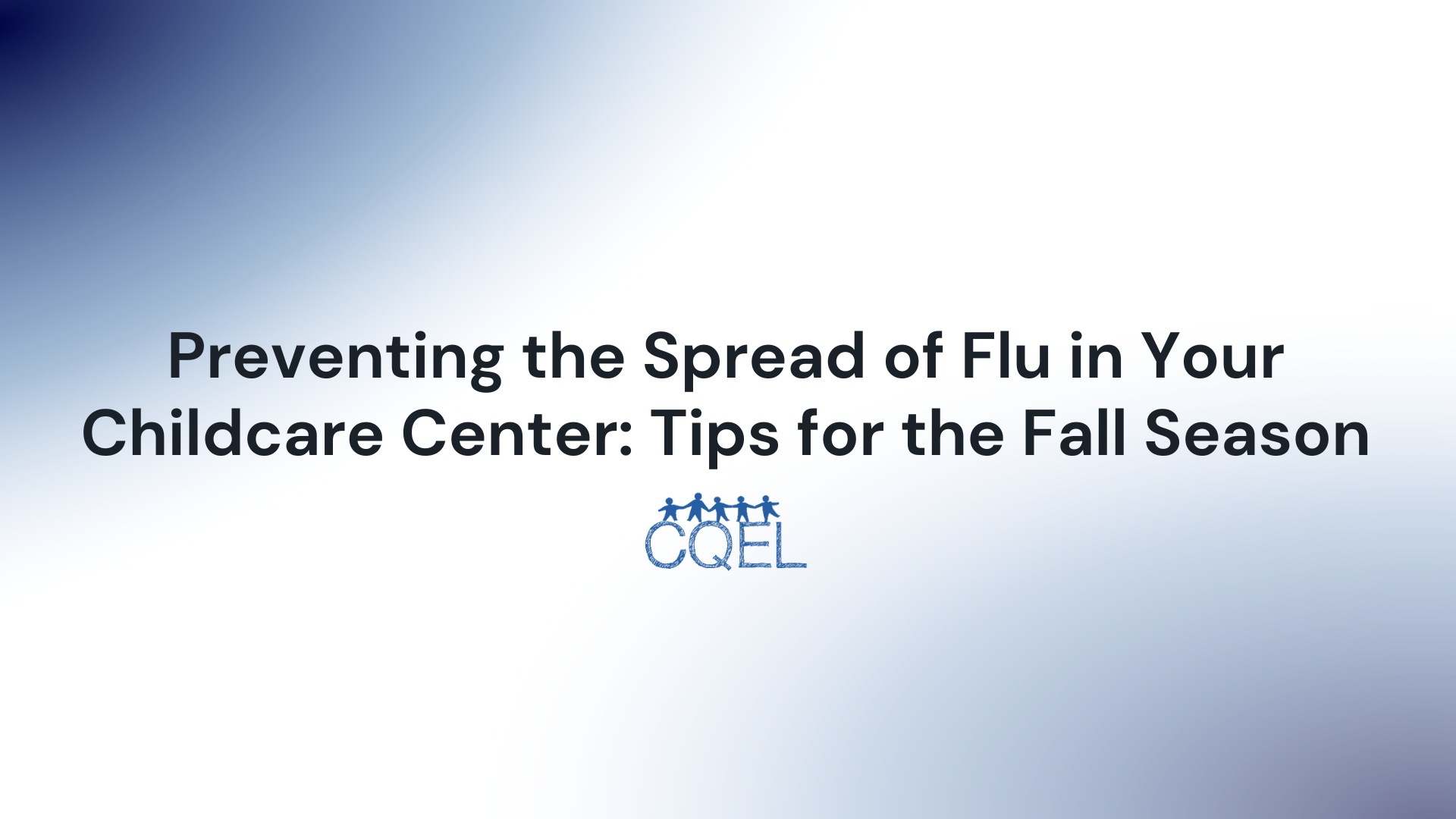Preventing the Spread of Flu in Your Childcare Center: Tips for the Fall Season
The flu season brings a wave of worry for childcare providers, as children are particularly susceptible to the virus. A childcare center's crowded and interactive environment can lead to the quick spread of the flu virus among children and staff.

The flu season brings a wave of worry for childcare providers, as children are particularly susceptible to the virus. A childcare center's crowded and interactive environment can lead to the quick spread of the flu virus among children and staff. As a childcare provider, it is crucial to implement effective strategies to prevent the spread of the flu in your center. According to the Centers for Disease Control and Prevention (CDC), getting a flu vaccine is the most important step in protecting against flu viruses. However, there are several additional measures that can be taken to ensure the safety and health of the children and staff at your center. This article will outline some essential tips for preventing the spread of flu in your childcare center during the fall season.
Vaccination and Education
Encourage all staff, parents, and children (above six months old) to get the flu vaccine. It is especially important for those who are at high risk of developing flu-related complications, such as pregnant women, young children, and people with chronic health conditions. Additionally, the parents and staff should be educated about the importance of the flu vaccine and dispel any associated myths. The American Academy of Pediatrics (AAP) provides helpful resources and information on the flu vaccine for children. Ensure that all staff members are trained on how to recognize the symptoms of flu and what to do if they suspect a child has the flu. This education should also extend to proper hand hygiene, respiratory etiquette (covering mouth and nose when coughing or sneezing), and the importance of staying home when sick.
Maintaining a Clean and Hygienic Environment
Maintaining a clean and hygienic environment is critical in preventing the spread of flu. Regularly clean and disinfect surfaces and objects that are touched often, such as doorknobs, toys, and tabletops. Use cleaning agents that are effective against flu viruses and follow the manufacturer's instructions for use. The Environmental Protection Agency (EPA) has a list of disinfectants that are effective against the flu virus. Additionally, ensure that there are adequate supplies of tissues, hand sanitizers, and soap in the center. Encourage children and staff to wash their hands frequently with soap and water for at least 20 seconds. If soap and water are not available, use an alcohol-based hand sanitizer with at least 60% alcohol.
Promoting Healthy Habits
Encourage healthy habits among children and staff. Promote proper hand hygiene by teaching children how to wash their hands properly and reminding them to wash their hands frequently. The CDC provides resources on handwashing for children and educators. Encourage children and staff to cover their mouth and nose with a tissue or their elbow when coughing or sneezing. Dispose of used tissues immediately in a lined trash can. Encourage children to avoid touching their eyes, nose, and mouth. Additionally, promote a healthy diet, regular physical activity, and adequate sleep to help boost the immune system.
Monitoring and Responding to Illness
Regularly monitor the health of the children and staff at your center. Be alert for symptoms of flu, such as fever, cough, sore throat, body aches, headache, chills, and fatigue. If a child or staff member shows symptoms of flu, isolate them from others as soon as possible and contact their parents or guardian. Follow the CDC's guidelines on what to do when someone is sick. Inform parents and staff about your center's policies on illness and exclusion. Ensure that your center has a policy in place for notifying parents and staff about cases of flu or other communicable diseases.
Preventing the spread of flu in your childcare center requires a multifaceted approach that includes vaccination, education, maintaining a clean and hygienic environment, promoting healthy habits, and monitoring and responding to illness. By implementing these strategies, you can help protect the health of the children and staff at your center and contribute to a healthier community.
